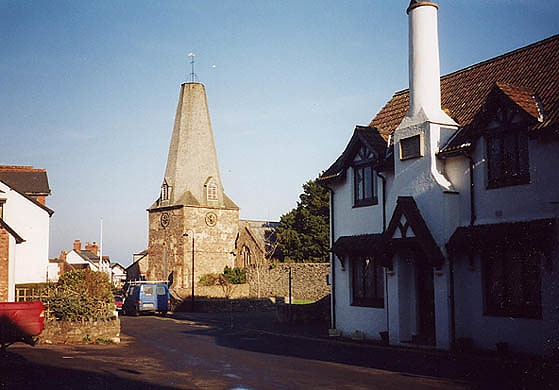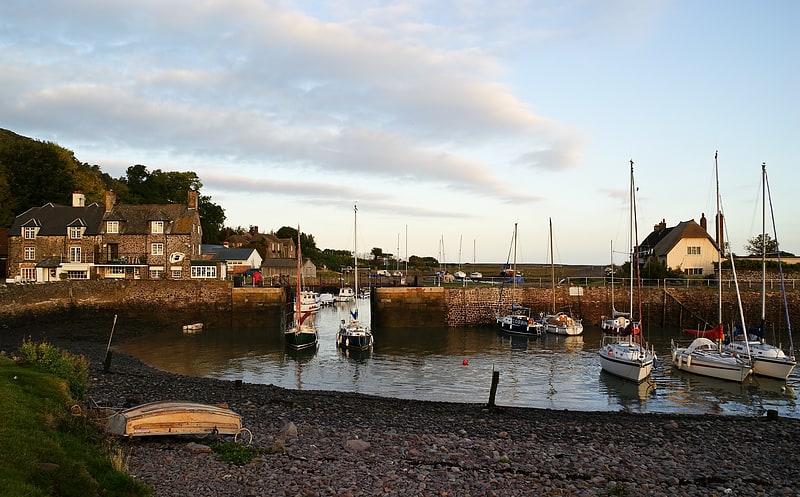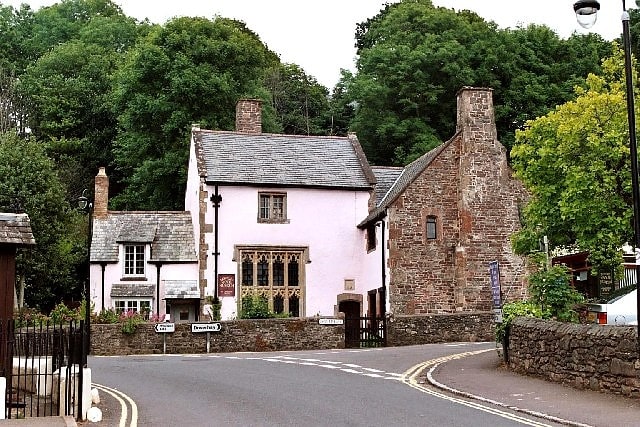Discover 5 hidden attractions, cool sights, and unusual things to do in Porlock (United Kingdom). Don't miss out on these must-see attractions: Dunkery Hill, Church of St Dubricius, and Porlock Weir. Also, be sure to include Dovery Manor Museum in your itinerary.
Below, you can find the list of the most amazing places you should visit in Porlock (England).
Table of Contents
Dunkery Hill

Summit in England. Dunkery Beacon at the summit of Dunkery Hill is the highest point on Exmoor and in Somerset, England. It is also the highest point in southern England outside of Dartmoor.
The sandstone hill rises to 519 metres (1,703 ft) and provides views over the surrounding moorland, the Bristol Channel and hills up to 86 miles (138 km) away. The site has been visited by humans since the Bronze Age, and contains several burial mounds in the form of cairns and bowl barrows. Sweetworthy on the lower slopes is the site of two Iron Age hill forts or enclosures and a deserted medieval settlement. The hill is part of a Site of Special Scientific Interest and National nature reserve. It was in private ownership until the 20th century, when it was donated to the National Trust by Sir Thomas Acland, Colonel Wiggin and Allan Hughes; a stone cairn was erected at the summit to commemorate the event.[1]
Church of St Dubricius

Building in Porlock, England. The Church of St Dubricius in Porlock, Somerset, England dates from the 13th century. The church has been designated by English Heritage as a Grade I listed building.
The dedication is to Dubricius (also known in Welsh as Dyfrig and in corrupt Norman-French as Devereux) (c. 465 – 550 or 612), a 6th-century Briton ecclesiastic venerated as a saint and may indicate he travelled to the area.
The church stands on the site of an earlier church which may date from around 1120. Restoration work was undertaken in the 15th century. The spire was damaged in a storm of 1703. Further restoration was undertaken between 1888 and 1891.
Within the church is the very fine late 15th century alabaster tomb of John Harington, 4th Baron Harington (1384–1418) who fought alongside King Henry V in France in 1417, and his wife Elizabeth Courtenay (died 1471), daughter of Edward de Courtenay, 3rd Earl of Devon (died 1419). Elizabeth survived her first husband and married secondly William Bonville, 1st Baron Bonville (died 1461). The style of armour worn by Baron Harington is of the period c.1470, as was worn in the time of his widow's death, and is not therefore an accurate representation of the armour worn at the time of his death in 1418. The monument and effigies are believed to have been erected at the expense of Elizabeth's step-daughter the great heiress Cicely Bonville, Baroness Harington and Marchioness of Dorset (1460–1529), and are considered from their very high quality "more befitting a cathedral than a retired country church". At the back of the nave is a clock dating from the early 15th century which struck the tenor bell hourly. It has no hands or clock face. The clock was used until 1897 when a new clock was installed to celebrate Queen Victoria's jubilee.
The parish is part of the benefice of Porlock and Porlock Weir with Stoke Pero, Selworthy and Luccombe within the Exmoor deanery.[2]
Address: Parson's St, TA24 8QJ Minehead
Porlock Weir

Village in England. Porlock Weir is a harbour settlement approximately 1.5 miles west of the inland village of Porlock, Somerset, England. "Porlock" comes from the Old English port loca, meaning an enclosure near a harbour. Porlock Weir refers to the salmon stakes and traps that were situated along the shore.
Many cottages date from the 17th century, including the Gibraltar Cottages which have been designated by English Heritage as a grade II listed building.
Like most ports in West Somerset, the harbour is tidal and is home to a small flotilla of yachts and is visited by many more in spring and summer. The port has existed for more than a thousand years. The Anglo-Saxon Chronicle reports that in 1052 Harold Godwinson came from Ireland with nine ships and plundered the area and before that in 866 AD it was raided by Danes. In the 18th and 19th centuries coal from South Wales was the main cargo and in World War II pit props cut in local forests were the return cargo.
The ketch Lizzy was wrecked at Gore Point, near Porlock Weir. The ship, built in Appledore, was spotted in trouble off Lynmouth in a storm in 1854. The ship had lost her masts, and was in very bad condition. A fishing boat was sent out to rescue the crew, as Lynmouth possessed no lifeboat. The boat reached the stricken ketch, rescued the crew and returned to Lynmouth safely. The weather improved, and a fresh crew, with the vessel's skipper attempted to salvage her. They improvised with a scrap of sail, and managed to get safely around Foreland Point. They sailed on all night, only just managing to keep the ship afloat. When they reached Gore Point, a mile from Porlock Weir, the ketch sank in shallow water. The wreck lies submerged off the point.
On 12 January 1899, in a storm, the ten-ton Lynmouth lifeboat was launched, but because of the ferocity of the storm could not put out to sea, and was hauled by men and 20 horses over Countisbury and Porlock Hills to Porlock Weir where the water was less rough. Thirteen seamen were rescued.
The South West Coast Path and other trails link to Porlock Ridge and Saltmarsh and Culbone, the smallest parish church in England.[3]
Dovery Manor Museum

Museum in Porlock, England. Dovery Manor Museum, also known as Porlock Museum, is a local museum in Porlock, Somerset, England.
The building was built as a Manor house in the late 15th century and extended in the 17th century. In 1895 the building was restored by Edmund Buckle for Sir Charles Chadwyck-Healey. It is a Grade II* listed building.
The museum has a collection of artefacts, photographs, press cuttings, paintings, and displays of local interest, particularly relating to Porlock Hill on the A39. In particular the events of 12 January 1899 are recorded when, during a storm, the 10-ton Lynmouth lifeboat was launched but because of the ferocity of the storm could not put out to sea, and was hauled by men and 20 horses over Countisbury and Porlock hills to Porlock Weir where the water in the bay was less rough. The endeavour enabled 13 seamen to be rescued.
At the rear of the building a Herb Garden is being restored with plants grown for medicinal and culinary use when the manor was built.[4]
Address: Toll Road, Porlock
Hawkcombe Woods

Nature preserve in England. Hawkcombe Woods is a national nature reserve near Porlock on Exmoor, Somerset, England.
The 101 hectares (250 acres) woodlands are notable for their lichens, heath fritillary butterfly, red wood ant colonies, dead wood invertebrates and ancient pollards.
They are part of the North Exmoor Site of Special Scientific Interest.[5]